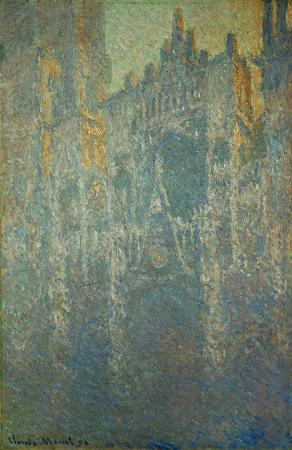Museum Folkwang. Museum Folkwang is a major collection of 19th-and 20th-century art in Essen, Germany. The museum was established in 1922 by merging the Essener Kunstmuseum, which was founded in 1906, and the private Folkwang Museum of the collector and patron Karl Ernst Osthaus in Hagen, founded in 1902. The term Folkwang derives from the name of the afterlife meadow of the dead, Fˇlkvangr, presided over by the Norse goddess Freyja. Museum Folkwang incorporates the Deutsche Plakat Museum, comprising circa 340,000 posters from politics, economy and culture. During a visit in Essen in 1932, Paul J. Sachs called the Folkwang the most beautiful museum in the world. In 2007, David Chipperfield designed an extension, which was then built onto the older building. Ernst Gosebruch, director of the museum in the 1920s and 1930s, and earlier directors, had made the museum's collection of modern art into one of the leading collections in the world. However, when the National Socialists came to power in Germany in the early 1930s, they instituted a government-wide purge of what they termed degenerate art, by which they meant abstract, cubist, expressionist, surrealist and impressionist art. In 1937, Joseph Goebbels created a commission headed by Adolf Ziegler whose mission was to purge all German government-owned museums of such degenerate works. The Museum Folkwang fell into the category of government-controlled institutions and was therefore part of the purge. Over 1,200 works of art were removed from the museum, part of over 17,000 works of art removed from museums throughout Germany. The Nazi government first organized a mass exhibition of this degenerate art, which, ironically, proved to be quite popular, and then began systematically selling the art to raise cash. Many works of art came into the possession of American and other collectors and museums. In the end, approximately 5,000 works of art deemed unsaleable were burned. The Museum Folkwang and the other museums affected have generally not tried to reclaim these works because at the time, the removal and sale of the works of art were legal under German law. The works of art were ultimately the property of the German government, which had the legal right to dispose of them as it saw fit. A ÔéČ55m reconstruction was made possible by Berthold Beitz, a philanthropist and former steel baron who initiated his Krupp Foundation to finance the project. An international architectural competition organized by the City of Essen was won by David Chipperfield in March 2007. The new building, adding 16,000 m2 to the existing museum, opened in January 2010, when Essen and the Ruhr Area became European Capital of Culture. The museum has collections on 19th and 20th century art, Modern art, Photography, Prints and drawings, German Posters, Ancient and Non-European art. The Photographic Collection was established as an independent department in the Museum Folkwang in 1978; today it contains more than 50,000 photographs and a number of artists' estates. The Alfried Krupp von Bohlen und Halbach Foundation has been granting fellowships for contemporary German photography since 1982 in cooperation with the Photographic Collection of the Museum Folkwang. The Museum Folkwang owns the copyright for the photographers Errell, Germaine Krull, Helmar Lerski, Walter Peterhans, Fee Schlapper and Otto Steinert.
more...





